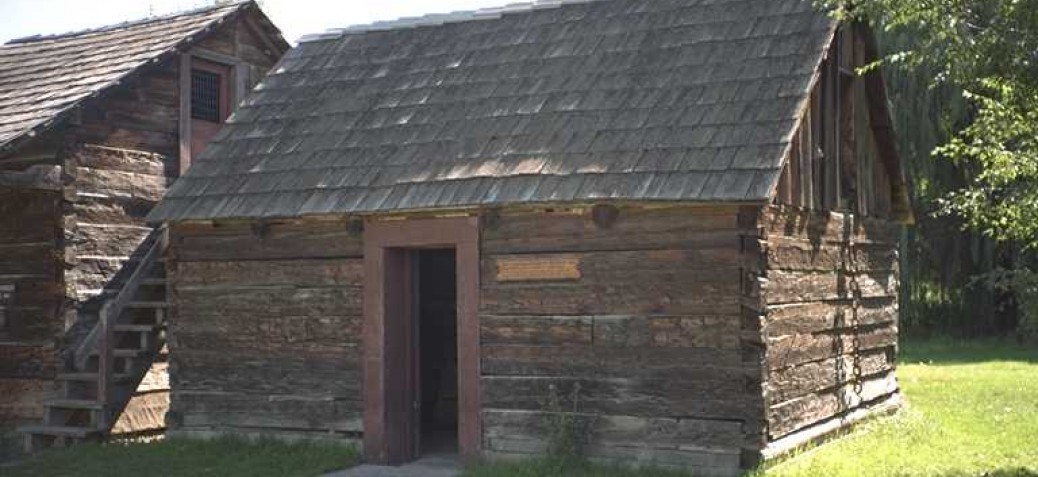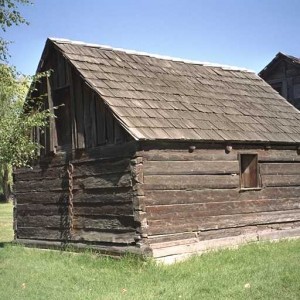Pandosy Mission Root House
Place Description
The historic place is the single-storey squared-log Pandosy Mission Root House, built in 1865 in Pioneer vernacular styling as part of the multi-building Pandosy Mission complex at 3685 Benvoulin Road in Kelowna's Mission sector.
Heritage Value
The Pandosy Mission is often called the most important heritage resource in Kelowna, and this building is one of the three in-situ structures in the complex that originated as part of the Mission. The Mission of the Immaculate Conception, located here by the Oblate Order in 1860, was the base for widespread missionary activity. As the first permanent white settlement in the Central Okanagan, it has a long list of 'firsts': first church; first school; first planting of fruit trees, grapes, and tobacco. For 30 years the Mission was the focus of settlement, until the Benvoulin and Kelowna townsites were laid out. The Pandosy Mission is now the largest and most respected heritage conservation site in the area.
When Fathers Pandosy and Richard established the Okanagan Mission on this site in 1860, they had to grow their own food or starve. Not only was their Mission poor, but since they were the first European settlers in the area, there was no one to purchase supplies from even if they had money. The root house has value for reminding us that winter frost-free storage of food was extremely important before the era of modern refrigeration and long-distance transportation. This is probably the oldest of the few remaining examples of root houses in the Kelowna area. The Okanagan Mission of the Oblate missionaries had to be self-supporting in food, and so agricultural storage was integral to the effort. The root house was built with double log walls, with the space between them filled with earth for insulation. This would protect the foods stored within from freezing during the winter, and would also keep the contents cool in summer.
Storage facilities such as this held winter supplies of root crops, such as potatoes, turnips, and carrots. They were also used for apples, pears, and dried fruit. The apple seedlings brought from St. Mary's Mission on the Fraser in 1862 were the start of the Mission's orchard, the first in the Okanagan and the first sign of what was to become the area's most important industry. One of the original trees continued to fruit until it was killed by the infamous freeze of November 1955. Fortunately Dr. Don V. Fraser of the Summerland Research Station took scions from it before it died, and grafted over new trees, which were planted at Summerland and here at the Pandosy Mission historic site.
The exterior logs are jointed with dovetail and half-dovetail joints, common among square-log buildings and representative of pioneer building in the area. The building is traditionally dated as being contemporaneous with the Chapel and the Brothers' House, from the 1860s. This is not certain, however, as log buildings are difficult to date. Also, the more than fifty years the buildings on the site were used as pig pens, chicken coops, and cattle stalls, after the property was sold by the Oblates in 1897, eradicated most of the evidence. The structure would likely have been built either very early, before the Mission's agricultural operations were moved further south (around the original barn site) by the 1880s; or else after 1897, when the current site, sold by the Oblates, was used for farming operations by the new owners.
Character Defining Elements
- Vernacular log building, characteristic of the pioneer era
- Unusual construction, comprising two log walls with the space between them packed with earth for insulation
- Ground floor has squared logs with dovetail and half-dovetail joints
- Gable ends are framed and covered with vertical boards
- Part of the 10-building Pandosy Mission complex





